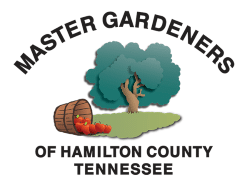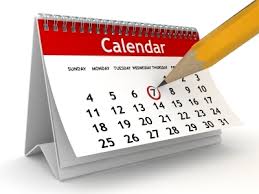This is an action-packed month for gardening. Gardens are bursting with color from all of the flowering bulbs and spring flowering trees and shrubs but you probably have weeds popping up everywhere as well. Temperatures are cool enough that its pleasant to work outdoors but its warm enough that perennials plants have broken their dormancy. This also is the month when we have our last frost making it a great time to plant annuals and vegetables. Here are some timely plant and garden related tips from the University of Tennessee Institute of Agriculture:
Odds & Ends
- Spring is a good time to freshen up the mulch in your landscape. Remember not to pile it around the trunks of your trees and shrubs. If using a pre-emergent herbicide, be sure to apply it before spreading your mulch to prevent the sunlight from breaking it down. It also forms a more effective barrier when allowed to bond with soil particles.
- Edge your garden beds.
- Clean your pond or water feature and remove winter debris. Cutback and remove all dead plant debris from your potted aquatic plants. Begin feeding fish around mid-April.
- Pull weeds now while the task is easy and the weather is pleasant.
Shrubs & Trees
- Prune spring-flowering shrubs (azaleas, flowering quince, Forsythia and Loropetalum) soon after they finish flowering, but only if they need it. Selectively cut old or unruly branches by reaching deeply into the shrub. Leave no visible stub by making the cut just above a joint. This pruning method will keep them from looking like meatballs.
- Remember it is not necessary to fertilize well-established trees or shrubs. If you are trying to encourage faster growth on new plantings, a balanced granular fertilizer scattered on the soil surface is effective. Be careful not to overdo it. Tree spikes or drilling fertilizer into the root zone is unnecessary and expensive.
- Azaleas often show symptoms of lace bug and spider mite infestations during the hot months of summer. This damage can be prevented by a onetime early application of the systemic insecticide imidacloprid. This insecticide should be poured in liquid form around the root system as the flowers fade, spreading the active ingredients throughout the plant issue where it remains effective through the growing season. Bayer Advanced Tree and Shrub Insect Control is a common brand that contains this safe and effective insecticide. Always follow label directions when applying any pesticide.
Perennials, Annuals & Bulbs
- Cut back any woody perennials that may need it, like rosemary, rue, lavender, Santolina and Artemisia. If done before the danger of frost has passed, new growth may appear, and a freeze can kill that new growth and sometimes the entire plant.
- Prepare your annual planting beds now so they are ready when you want to plant. The addition of well-rotted manure, processed manure, peat moss or compost are good additives for building compost humus in the soil. I recommend not planting annuals until after April 15 th, our average last frost-free date.
- Plant tender bulbs and tubers (gladiola, lilies and dahlias). You may continue planting additional bulbs every two weeks until mid June to ensure a continuous source of bloom.
- Deadhead or remove spent flowers from spring blooming bulbs. Don’t remove foliage until it yellows or freely pulls loose when slightly tugged.
- You can direct seed easy-to-grow flowering annuals and vegetables. Some easy flowers to grow from seed include marigold, zinnia, sunflowers and cosmos
- Stake now, any perennials which lodge or fall over from the weight of their heavy blooms in late spring or summer. Staking now will allow plenty of time for new growth to hide your support structures, preventing them from taking away from the beauty of your perennials.
- Stake clematis and any other vines which could use the added support as new growth emerges and they begin to flower.
Fruits & Veggies
- Beans, peas, corn and okra are some easy direct-sow vegetables, while dill, basil and cilantro are some easy direct-sow herbs.
- While fruit trees are blooming, refrain from spraying any insecticides to protect the bee population busy pollinating the flowers. Within a week after petal drop, you can resume using any pesticides.
- After petal drop, consider spraying your peach, plum, and cherry fruit trees for protection from fungal diseases like brown rot, rust, and leaf spots.
- You can still plant these cool-season veggies this month: spinach, head and leaf lettuce, collards, turnip greens, onions, beets, broccoli, cabbage, Brussel sprouts, cauliflower, carrots, early potatoes, radish and Swiss chard can be direct seeded or transplanted into the garden.
- After April 15th, plant warm season veggies like tomatoes, peppers, and corn.


